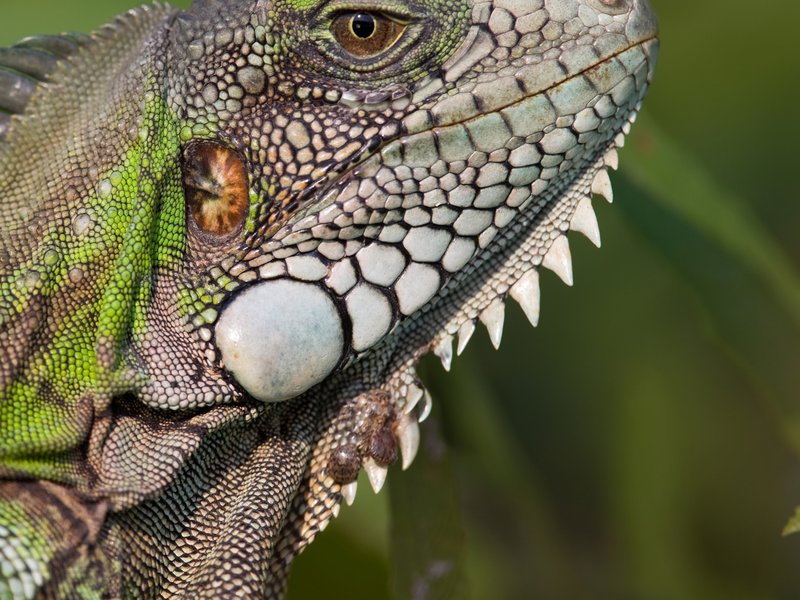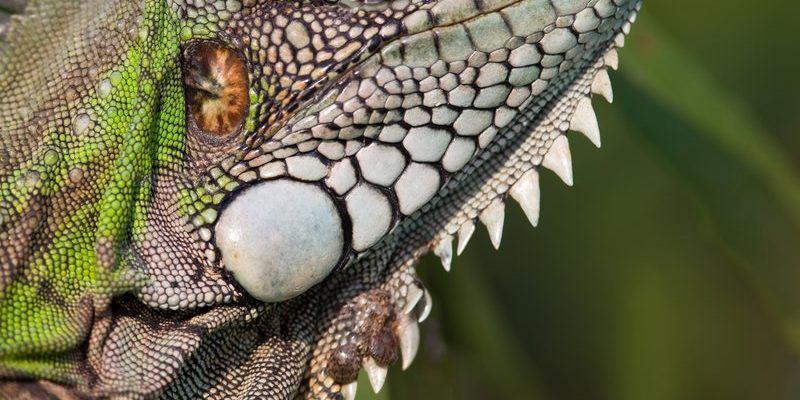
Iguanas are primarily found in Central and South America, but they also make their presence felt in some parts of the Caribbean and the southern United States. Think of them as nature’s little explorers, spread across various landscapes from bustling cities to untouched rainforests. Let’s dive deeper into the fascinating world of iguanas and explore where they are found around the globe.
1. The Tropical Regions of Central America
Central America is like a paradise for iguanas, as these reptiles thrive in warm, humid climates. Countries like Costa Rica and Nicaragua host a wide variety of iguana species. Here, you can find Green Iguanas, which are quite common and easily recognizable with their vibrant green scales.
In this region, iguanas often make their homes in trees, where they feel safe from predators. They are arboreal, which means they spend a lot of their time in the treetops, basking in the sun or munching on leaves. The lush rainforests of Central America provide the perfect backdrop for their daily activities.
Interestingly, iguanas are also known to venture into urban areas. In places like Costa Rica’s capital, San José, you might spot these reptiles climbing fences or sunbathing on rooftops. It’s a unique sight, isn’t it?
2. The Diverse Landscapes of South America
Moving south, iguanas can be found in various environments across South America. In countries like Colombia and Venezuela, they thrive in both jungles and savannahs. The Green Iguana again steals the spotlight here, but you can also encounter other species, such as the Lesser Antillean Iguana.
In these regions, iguanas often adapt to their surroundings. For instance, in the Amazon rainforest, they camouflage incredibly well among the greenery, making them hard to spot. Their diet varies too, as they don’t mind munching on flowers and fruits available in their habitat.
You might be surprised to learn that some iguanas can even be found high up in the Andes Mountains! While they prefer lower altitudes, the ability to adapt to diverse environments showcases their resilience.
3. The Caribbean Islands
The Caribbean is not just about sandy beaches and crystal-clear waters; it’s also home to several iguana species. Islands like Puerto Rico, the Bahamas, and the Cayman Islands feature populations of iguanas that are unique to their respective locales.
Take the Rock Iguana, for example, which can be found on islands like Grand Cayman. These iguanas have a more rugged appearance than their mainland cousins, sporting a more muted color palette that helps them blend in with rocky terrains. They tend to prefer dry, arid environments, which might seem odd given iguanas’ love for moisture.
The Caribbean iguanas are fascinating not just for their appearance, but also for their conservation status. Many species are endangered due to habitat loss and predation from non-native animals. It’s a reminder of how crucial it is to protect these unique ecosystems.
4. The Southern United States
You may be surprised that iguanas can also be found in the southern parts of the United States. Florida is the place to be if you’re hoping to catch a glimpse of iguanas in North America! The Green Iguana is the most common species here.
In areas like Miami, iguanas have adapted quite well to urban life. You can find them lounging in gardens or even basking by the water’s edge. Interestingly, these iguanas can tolerate colder temperatures better than you might expect, making them somewhat of a resilient species.
However, they can also be seen as a pest in some areas, as their population has been known to grow rapidly, particularly in warmer months. If you’re in Florida during the spring and summer, keep your eyes peeled—you might just spot a few of these green creatures soaking up the sun!
5. Iguanas in the Exotic Landscape of Hawaii
Believe it or not, iguanas have found their way to Hawaii too! Although not native to the islands, they have become part of the local fauna over time. These iguanas were brought in as pets, and some ended up in the wild.
While they’re not as common as in their native habitats, you can find iguanas on the Big Island and some other spots around the state. The tropical climate of Hawaii provides a warm environment that iguanas thrive in, and they often find shelter in gardens and parks.
This unique situation raises several questions about wildlife management and the effects of introducing non-native species to delicate ecosystems. It’s a reminder of how interconnected our environment can be, even across vast oceans.
6. The Impact of Habitat Loss on Iguanas
As interesting as iguanas are, they face significant threats from habitat loss and climate change. Deforestation and urbanization are pushing these reptiles out of their homes. In their scramble for survival, iguanas often wander into human-populated areas, leading to conflicts.
Conservation efforts are being made across regions to protect iguana habitats. In places like the Caribbean, organizations are working tirelessly to safeguard the Rock Iguana and other endangered species. They often engage local communities to help raise awareness and foster eco-friendly practices.
Even as individuals, we can help. Supporting wildlife conservation initiatives and being mindful about the environment can make a huge difference. Every little step counts in ensuring that iguanas continue to thrive around the world.
7. The Fascinating Behavior of Iguanas
Iguanas aren’t just pretty faces; they have intriguing behaviors that make them even more compelling. For starters, they’re social animals that communicate using body language. You might notice them bobbing their heads or doing push-ups—yes, iguanas can be fitness enthusiasts too!
During mating season, these behaviors become more pronounced. Males will often display to attract females, showcasing their vibrant colors and impressive size. Their ability to change colors slightly helps in communication and camouflage, making them even more fascinating.
Let’s not forget about their eating habits! Iguanas are primarily herbivores, munching on leaves, flowers, and fruits. They have a unique digestive system that allows them to extract nutrients from tough plant materials. This makes them essential players in their ecosystems, aiding in plant growth and maintaining the balance of their habitats.
Iguanas are truly remarkable creatures that add a splash of color and vibrancy to our world. From the tropical forests of Central America to the sunny shores of Florida and even the exotic landscapes of Hawaii, these reptiles have carved out a variety of habitats where they thrive.
Understanding where iguanas are found around the world helps us appreciate their role in the ecosystem and recognize the importance of conservation efforts. As we continue to explore and learn about our planet, let’s do our part to protect these incredible animals and the environments they inhabit. Every step counts in keeping the world of iguanas alive and well.

